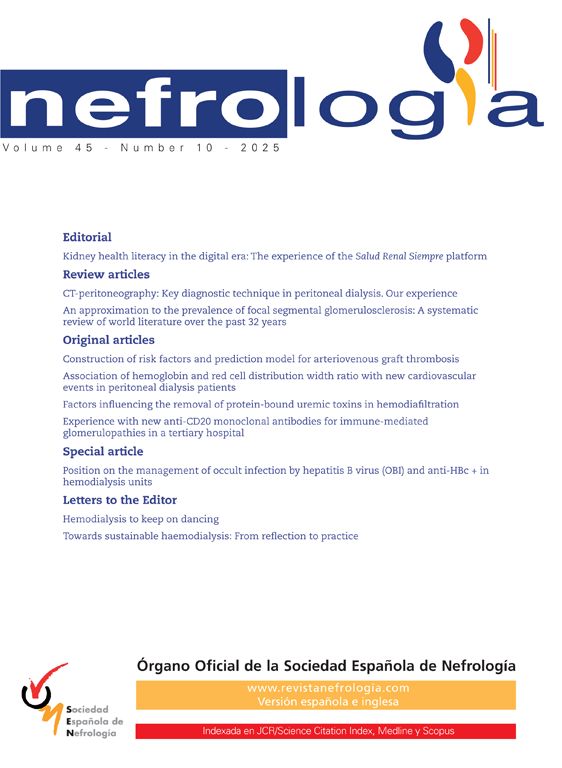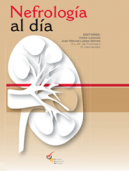Serum creatinine is the most widely use parameter to assessing renal function, even though limitations, some time is necessary meassure 24h creatinine clearance (CLcr), or estimate Cockroft-Gault (C-G) or MDRD formulas. Different methods can offer different results, and cause confusion in clinicians. Using Cystatin-C as new parameter of renal function could suppose an important improvement. The objective of our study was to compare the different methods from renal evaluation and establish the utility of cistatina-C in the hospital area. In the study were included 70 patients (44 men) selected of random way, predominate patients with kidney disease and diabetics, which was made CLcr and calculated C-G and MDRD formulas. The mean age of the patients was 66±14years, mean weight 73±17Kg, creatinine 2,14±1,77mg/dL, cystatin-c 1,77±1,18mg/L, CLcr 54,39±36,2 mL/min. The correlation of 1/Crea with the Clcr, C-G and MDRD formulas was respectively: 0,7735, 0.8269 and 0.9613, (p < 0.0001). The correlation of 1/Cist with the Clcr, C-G and MDRD was respectively: 0,836, 0.8142 and 0.832, (p <0 0001 by bland-altman graphs the average of difference between clcr with cg and mdrd was 2 8 ml min -1 5 respectively comparing 1 7 observed absolute differences 13 17 this formulas 12 statistically significant different methods from renal evaluation do not exist p 0,05). In conclusion, most of the urine collections could be avoided with the use of the formulas. Cystatin-c is far beyond the creatinine, mainly to detect slight renal alteration (sensitivity 80,4% U.S. 44,7% in men) becoming a promising alternative, that could reduce considerably hidden renal insufficiency (non detected by creatinine), although more studies are needed to confirm.
Keywords:
Glomerular filtration rate (GFR)
Creatinine clearance
Cystatin-C
Cockroft-Gault formula
MDRD formula
La prueba utilizada habitualmente para valorar la función renal es la creatinina sérica, aunque por sus limitaciones, muchas ocasiones es necesario recurrir a la medida del aclaramiento de creatinina en orina de 24 horas (Clcr), la fórmula de Cockroft-Gault (CG) o la fórmula de Levey (MDRD). Los distintos métodos pueden dar distintos resultados, creando una situación de confusión a los clínicos. La introducción de la Cistatina-C como nuevo marcador de función renal, podría suponer una mejora considerable. El objetivo de nuestro estudio fue comparar los distintos métodos de valoración renal y establecer la utilidad de la cistatina-C en el ámbito hospitalario. Fueron incluidos en el estudio 70 pacientes (44 hombres) seleccionados de manera aleatoria, predominando enfermos renales y pacientes diabéticos, a los que se les realizó el CLcr y se calculó CG y MDRD. La edad media de los pacientes fue 66±14años, peso medio 73±17Kg, creatinina 2,14±1,77mg/dL, cistatina-c 1,77±1,18mg/L, CLcr 54,39±36,2mL/min. La correlación entre 1/Crea con el Clcr, CG y MDRD fue respectivamente: 0,7735, 0,8269 y 0,9613, (p < 0,0001). La correlación entre 1/Cist con el Clcr, CG y MDRD fue respectivamente: 0,836, 0,8142 y 0,832, (p <0 0001 mediante los gráficos de bland-altman la diferencia media observada entre clcr con c-g y mdrd fue -1 5 ml min 2 8 respectivamente comparando cg 1 7 las diferencias absolutas observadas 13 17 ambas fórmulas 12 no existen estadísticamente significativas distintos métodos valoración renal p 0,05). En conclusión, la mayoría de las recogidas de orina podrían evitarse con la utilización de las fórmulas. La Cistatina es muy superior a la creatinina, sobre todo para detectar leve alteración renal (sensibilidad 80,4% us 44,7% en hombres) convirtiéndose en una alternativa prometedora que reduciría a más de la mitad la IRCoculta generada por la creatinina, aunque se necesitan más estudios para confirmarlo.
Palabras clave:
Tasa de filtración glomerular
Aclaramiento de creatinina
Cistatina-C
Fórmula de Cockroft-Gault
Fórmula MDRD





